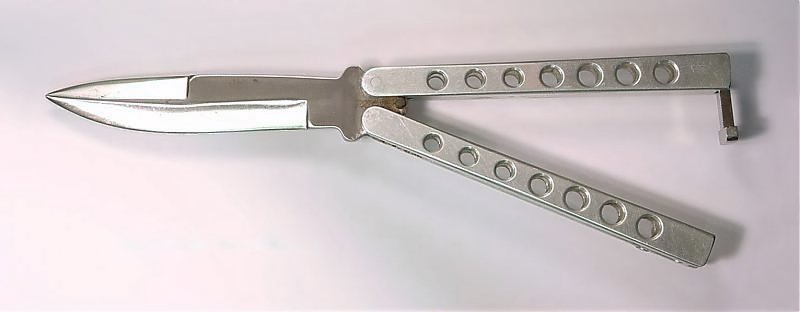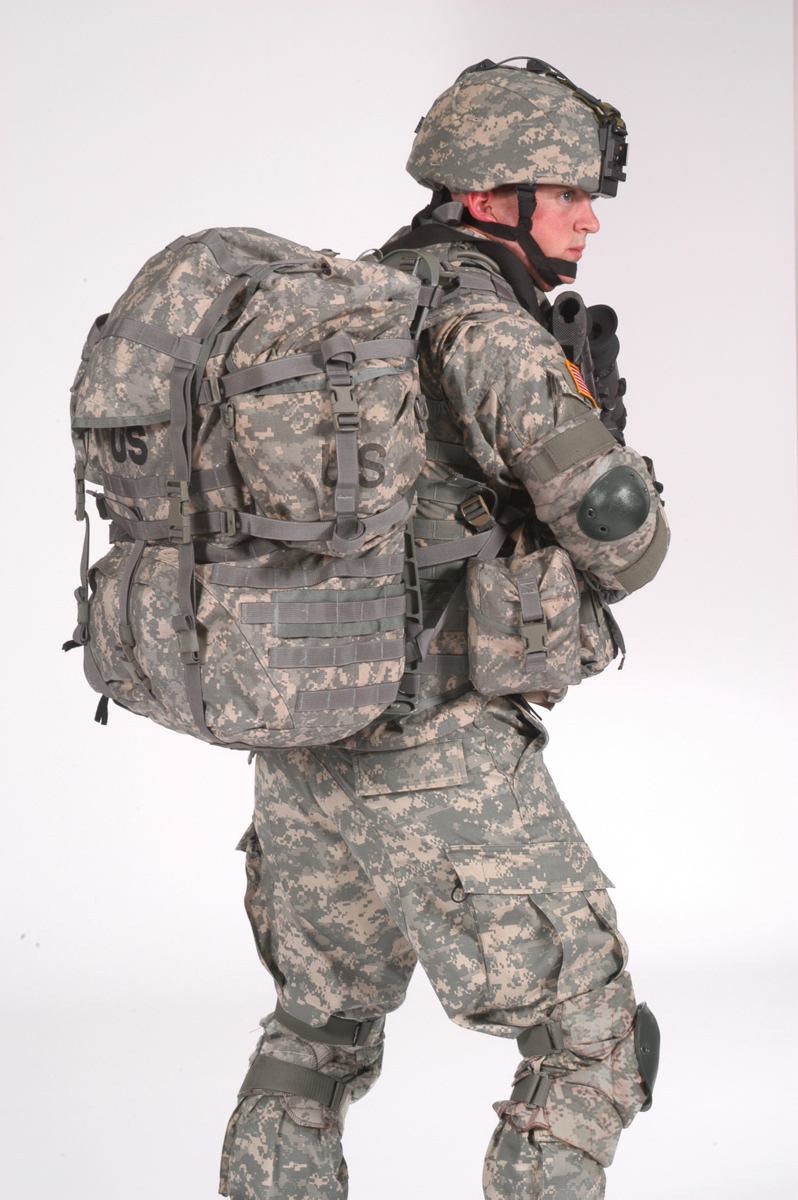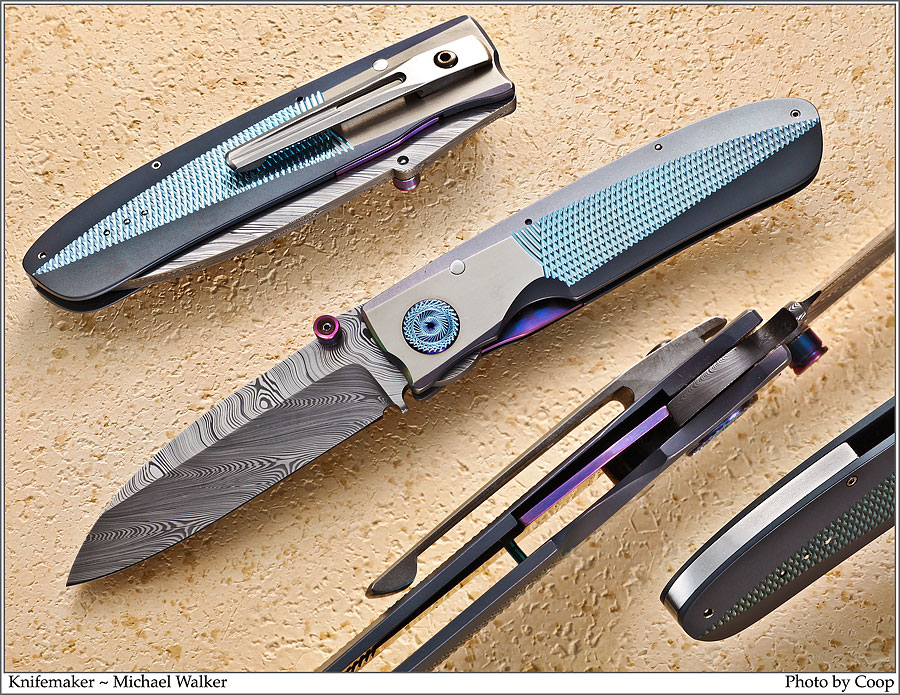|
Commander (knife)
The Commander (knife) is a large recurve folding knife made by Emerson Knives, Inc. that was based on a custom design, the ES1-M, by Ernest Emerson that he originally built for a West Coast Navy SEAL Team. It was winner of the Blade Magazine Overall Knife of the Year Award for 1999. History The Commander has its origins with Emerson's CQC-8 or "Banana" folding fighting knife based on the Bob Taylor Warrior Knife and the Bill Moran ST-23: a knife designed with the blade in line for reverse grip or sabre grip fighting.Dick, Steven (1997).''Emerson ES1-M Special OPS Survival Blade'', Tactical Knives Magazine. Winter 1997 This knife became popular among the British SAS and the US Navy SEALs,"Le CQC-8 d'Emerson Knives", ''CIBLES Magazine'', Issue #439,October 2006Guzy, Mark R. (2003)Testimony Before Nevada Assembly Judiciary Committee Minutes of the Meeting of the Nevada Assembly Committee on Judiciary Seventy-Second Session'' (2003-03-27). Retrieved 2009-05-12 however the SEALs w ... [...More Info...] [...Related Items...] OR: [Wikipedia] [Google] [Baidu] |
Ernest Emerson
Ernest R. Emerson (born March 7, 1955) is an American custom knifemaker, martial artist, and edged-weapons expert. Originally an engineer and machinist in the aerospace industry, Emerson became a knifemaker by producing knives for a martial arts class and making art knives early in his knifemaking career. In the 1980s he became better known for his combat knives and popularizing a style of knife known as the Tactical-folder. In order to secure military contracts, Emerson eventually founded Emerson Knives, Inc a production company to mass-produce his designs in 1996. Emerson's knives have been displayed as museum pieces, designed for use by Navy SEALs and used by NASA in outer space. Emerson's knives have been featured in films and novels, due to their association with military units. This has furthered their popularity with collectors. Emerson is an accomplished martial artist who has developed a combatives system, Emerson Combat Systems, which has been taught to police ... [...More Info...] [...Related Items...] OR: [Wikipedia] [Google] [Baidu] |
Atlanta
Atlanta ( ) is the capital and most populous city of the U.S. state of Georgia. It is the seat of Fulton County, the most populous county in Georgia, but its territory falls in both Fulton and DeKalb counties. With a population of 498,715 living within the city limits, it is the eighth most populous city in the Southeast and 38th most populous city in the United States according to the 2020 U.S. census. It is the core of the much larger Atlanta metropolitan area, which is home to more than 6.1 million people, making it the eighth-largest metropolitan area in the United States. Situated among the foothills of the Appalachian Mountains at an elevation of just over above sea level, it features unique topography that includes rolling hills, lush greenery, and the most dense urban tree coverage of any major city in the United States. Atlanta was originally founded as the terminus of a major state-sponsored railroad, but it soon became the convergence point among several rai ... [...More Info...] [...Related Items...] OR: [Wikipedia] [Google] [Baidu] |
Soldier Of Fortune, Inc
A soldier is a person who is a member of an army. A soldier can be a conscripted or volunteer enlisted person, a non-commissioned officer, or an officer. Etymology The word ''soldier'' derives from the Middle English word , from Old French or , meaning mercenary, from , meaning shilling's worth or wage, from or , shilling. The word is also related to the Medieval Latin , meaning soldier (literally, "one having pay"). These words ultimately derive from the Late Latin word , referring to an Ancient Roman coin used in the Byzantine Empire. Occupational designations In most armies use of the word "soldier" has taken on a more general meaning due to the increasing specialization of military occupations that require different areas of knowledge and skill-sets. As a result, "soldiers" are referred to by names or ranks which reflect an individual's military occupation specialty arm, service, or branch of military employment, their type of unit, or operational employment or technica ... [...More Info...] [...Related Items...] OR: [Wikipedia] [Google] [Baidu] |
MOLLE
MOLLE (pronounced ,, homophonic with the name Molly) is an acronym for Modular Lightweight Load-carrying Equipment. It is used to define the current generation of load-bearing equipment and backpacks used by a number of NATO armed forces, especially the British Army and the United States Army. The system's modularity is derived from the use of Pouch Attachment Ladder System (PALS) webbing equipment as rows of heavy-duty nylon stitched onto the vest to allow for the attachment of various compatible pouches and accessories. This method of attachment has become a ''de facto'' standard for modular tactical gear, replacing the All-purpose Lightweight Individual Carrying Equipment (ALICE) system used in the earliest modular vest systems (which is still in use with many police forces). Components Tactical assault panel The Tactical Assault Panel (TAP) replaces the fighting load carrier (FLC). It is a bib-like chest rig that can be used alone or mounted on the Improved Outer Tactica ... [...More Info...] [...Related Items...] OR: [Wikipedia] [Google] [Baidu] |
Walker Linerlock
The Linerlock is a locking mechanism for folding pocket knives. A Linerlock is a folding knife with a side-spring lock that can be opened and closed with one hand without repositioning the knife in the hand. The lock is self-adjusting for wear. The modern Linerlock traces its lineage to the late 19th century, but in the 1980s the design was improved by American custom knifemaker Michael Walker. History Linerlock knives have been around since the late 19th century. The Cattaraugus liner locking patent, 825,093 was issued on July 3, 1906. After 1923 when the patent expired, it was used by other manufacturers such as in the common military and lineman's issue two-blade electrician’s knife; the Camillus TL-29 for the locking screwdriver-stripper blade, until 2007 when the Camillus Cutlery Company went out of business. Walker refined and popularized the design, eventually securing a trademark for the name "Linerlock" in March 1990. Walker's improvement to the design was to facilit ... [...More Info...] [...Related Items...] OR: [Wikipedia] [Google] [Baidu] |
Lanyard
A lanyard is a cord, length of webbing, or strap that may serve any of various functions, which include a means of attachment, restraint, retrieval, and activation and deactivation. A lanyard is also a piece of rigging used to secure or lower objects aboard a ship."lanyard lan-yrd." Merriam-Webster's Collegiate(R) Dictionary. Springfield: Merriam-Webster, 2004. Credo Reference. Web. 1 October 2012. Origins The earliest references to lanyards date from 15th century France: "lanière" was a thong or strap-on apparatus. Bosun's pipe, marlinspike, and small knives typically had a lanyard consisting of a string loop tied together with a diamond knot. It helped secure against fall and gave an extended grip over a small handle. In the French military, lanyards were used to connect a pistol, sword, or whistle (for signaling) to a uniform semi-permanently. Lanyards were used by mounted cavalry on land and naval officers at sea. A pistol lanyard can be easily removed and reattach ... [...More Info...] [...Related Items...] OR: [Wikipedia] [Google] [Baidu] |
Titanium
Titanium is a chemical element with the symbol Ti and atomic number 22. Found in nature only as an oxide, it can be reduced to produce a lustrous transition metal with a silver color, low density, and high strength, resistant to corrosion in sea water, aqua regia, and chlorine. Titanium was discovered in Cornwall, Great Britain, by William Gregor in 1791 and was named by Martin Heinrich Klaproth after the Titans of Greek mythology. The element occurs within a number of minerals, principally rutile and ilmenite, which are widely distributed in the Earth's crust and lithosphere; it is found in almost all living things, as well as bodies of water, rocks, and soils. The metal is extracted from its principal mineral ores by the Kroll and Hunter processes. The most common compound, titanium dioxide, is a popular photocatalyst and is used in the manufacture of white pigments. Other compounds include titanium tetrachloride (TiCl4), a component of smoke screens and catalysts; and ... [...More Info...] [...Related Items...] OR: [Wikipedia] [Google] [Baidu] |
Damascus Steel
Damascus steel was the forged steel of the blades of swords smithed in the Near East from ingots of Wootz steel either imported from Southern India or made in production centres in Sri Lanka, or Khorasan, Iran. These swords are characterized by distinctive patterns of banding and mottling reminiscent of flowing water, sometimes in a "ladder" or "rose" pattern. Such blades were reputed to be tough, resistant to shattering, and capable of being honed to a sharp, resilient edge. Wootz (Indian), Pulad (Persian), Fuladh (Arabic), Bulat (Russian) and Bintie (Chinese) are all names for historical ultra-high carbon crucible steel typified by carbide segregation. "Wootz" is an erroneous transliteration of "utsa" or "fountain" in Sanskrit, however since 1794 it has been the primary word used to refer to historical hypereutectoid crucible steel. History Origins The origin of the name "Damascus Steel" is contentious: the Islamic scholars al-Kindi (full name Abu Ya'qub ibn Ishaq al-K ... [...More Info...] [...Related Items...] OR: [Wikipedia] [Google] [Baidu] |
CPM S30V Steel
CPM S30V is a martensitic (hardened) powder-made (sintered) wear and corrosion resistant stainless steel developed by Dick Barber of Crucible Industries in collaboration with knifemaker Chris Reeve. Its chemistry promotes the formation and even distribution of vanadium carbides, which are harder and more effective at cutting than chromium carbides. These vanadium carbides give the steel a very refined grain, further improving the sharpness and toughness. Despite some difficulties with a consistent heat-treat, knifemakers use CPM S30V because its composition makes it easier to grind than other powder steels although the carbides still wear down the grinder belts considerably. It contains carbon 1.45%, chromium 14.00%, vanadium 4.00%, and molybdenum 2.00%. Barber received feedback from a number of other knife users and knifemakers such as Sal Glesser, Ernest Emerson, Tony Marfione, Phil Wilson, William Harsey Jr., Tom Mayo, Jerry Hossom, and Paul Bos in the development of CPM ... [...More Info...] [...Related Items...] OR: [Wikipedia] [Google] [Baidu] |
Rockwell Scale
The Rockwell scale is a hardness scale based on indentation hardness of a material. The Rockwell test measures the depth of penetration of an indenter under a large load (major load) compared to the penetration made by a preload (minor load). There are different scales, denoted by a single letter, that use different loads or indenters. The result is a dimensionless number noted as HRA, HRB, HRC, etc., where the last letter is the respective Rockwell scale. When testing metals, indentation hardness correlates linearly with tensile strength. History The differential depth hardness measurement was conceived in 1908 by Viennese professor Paul Ludwik in his book ''Die Kegelprobe'' (crudely, "the cone test"). The differential-depth method subtracted out the errors associated with the mechanical imperfections of the system, such as backlash and surface imperfections. The Brinell hardness test, invented in Sweden, was developed earlier – in 1900 – but it was slow, not use ... [...More Info...] [...Related Items...] OR: [Wikipedia] [Google] [Baidu] |
Emerson Rhino Knife
Emerson may refer to: People * Emerson (surname), a surname (and list of people with that name) * Emerson (given name), a given name (and list of people with that name) Places Australia *Emerson Crossing, a place in Adelaide Canada * Emerson, Manitoba **Pembina–Emerson Border Crossing ** Emerson (electoral district), a former electoral division in Manitoba * Emerson, Weldford Parish, New Brunswick United Kingdom * Emerson's Green or Emersons Green, South Gloucestershire, England United States * Emerson (Gary), a neighborhood in north-central Gary, Indiana * Emerson, Arkansas * Emerson, Georgia * Emerson, Iowa * Emerson, Nebraska * Emerson, New Jersey * Emerson, Ohio * Emerson, West Virginia * Emerson Hill, Staten Island, a neighborhood of New York City * Emerson Township, Michigan * Emerson Township, Dixon County, Nebraska * Emerson Township, Harlan County, Nebraska Institutions * Emerson College, Boston, Massachusetts * Emerson Hospital, Concord, Massachusetts * Emerson ... [...More Info...] [...Related Items...] OR: [Wikipedia] [Google] [Baidu] |






